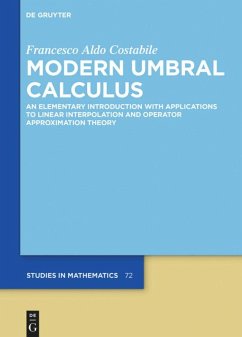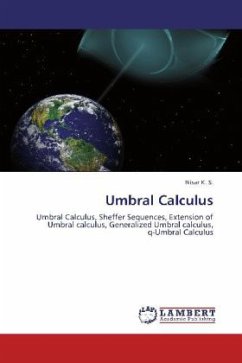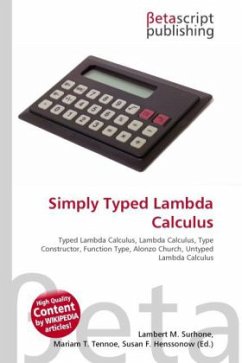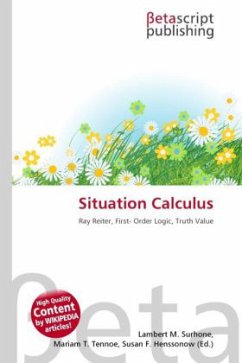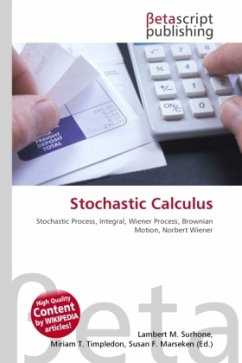
Umbral Calculus
Versandkostenfrei!
Versandfertig in 6-10 Tagen
23,99 €
inkl. MwSt.

PAYBACK Punkte
12 °P sammeln!
High Quality Content by WIKIPEDIA articles! In mathematics before the 1970s, the term umbral calculus was understood to mean the surprising similarities between otherwise unrelated polynomial equations, and certain shadowy techniques that can be used to 'prove' them. These techniques were introduced by John Blissard in 1861 and are sometimes called Blissard's symbolic method. They are often attributed to Édouard Lucas (or James Joseph Sylvester), who used the technique extensively.In the 1930s and 1940s, Eric Temple Bell attempted to set the umbral calculus on a rigorous footing, perhaps not ...
High Quality Content by WIKIPEDIA articles! In mathematics before the 1970s, the term umbral calculus was understood to mean the surprising similarities between otherwise unrelated polynomial equations, and certain shadowy techniques that can be used to 'prove' them. These techniques were introduced by John Blissard in 1861 and are sometimes called Blissard's symbolic method. They are often attributed to Édouard Lucas (or James Joseph Sylvester), who used the technique extensively.In the 1930s and 1940s, Eric Temple Bell attempted to set the umbral calculus on a rigorous footing, perhaps not altogether successfully.In the 1970s, Steven Roman, Gian-Carlo Rota, and others developed the umbral calculus by means of linear functionals on spaces of polynomials. Currently, umbral calculus is understood primarily to mean the study of Sheffer sequences, including polynomial sequences of binomial type and Appell sequences.



